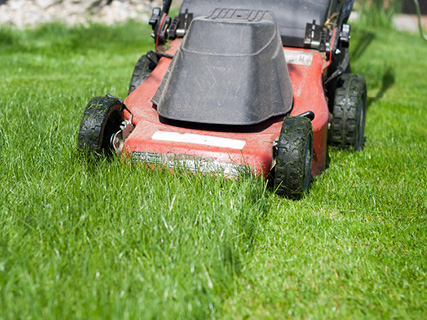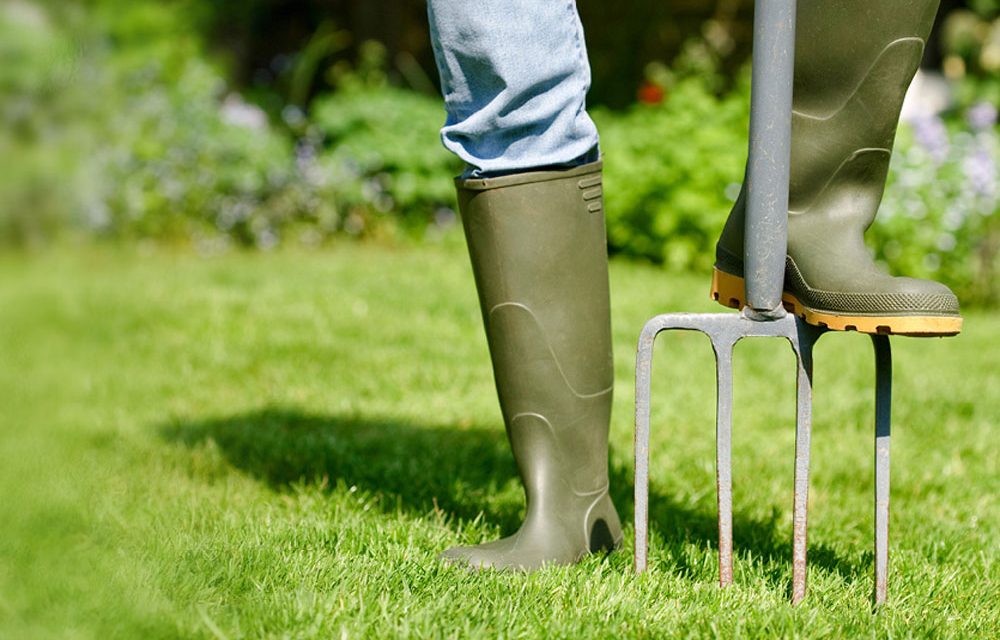Whether you’re in a winter or a summer rainfall area, there are a few essential must-dos when it comes to keeping your lawn green.
“Spring has sprung, the grass is ris” as the rhyme goes. In this case – with tongue in cheek – it could go on “I wonder where the lawnmower is!” . This is the perfect time to get to grips with that crucial part of the garden.

Do this now
- In early spring if your soil is lacking in minerals, dress it with a lawn dressing to a depth of no more than four centimetres, or as the bag suggests. Lawn dressing is a mix of compost, fertiliser and soil.
- Aerate the soil in spring by pushing a garden fork into the soil (preferably when wet) at a spacing of 25mm and a depth of 100mm. Or use a rolling spike.
- Check your lawn for thatch. This is an accumulated layer of dead material at the base of the turf that can reduce water infiltration. If necessary, de-thatch the lawn now. This can be done with a garden rake – rubber teeth are preferable to steel or plastic ones.
- Trim surrounding trees and foliage that may have grown in winter and will inhibit sun on the lawn. Use a specialist pair of secateurs, a handsaw or a power saw.

Irrigation
- It is a fine idea to install an irrigation system. It’s easier than it looks and Builders has experts on hand to talk you through the advantages of drip, jet and directional sprayers, all available in store.
- Remember, always group plants by how much water they use, so you can water certain areas less than others.
- If you don’t want to put in irrigation, consider cyclical watering. It’s simple – basically you water for shorter periods, turn off the hose and sprinkler, or move it, and come back to the same place later. This allows time for the water to soak down into the soil. The first cycle will water the soil to a certain depth but each subsequent cycle will water deeper into the soil while avoiding runoff.
What types of lawn should I consider?
Kikuyu is still very popular in South Africa.
- Pros: sun hardy and fast spreading, relatively soft and easy to cut.
- Cons: uses a lot of water, can invade beds, doesn’t like shade.
LM or Berea
- Pros: soft and lush, loves shade.
- Cons: requires plenty of water, is not good in the harsh sun, tufts rather than mats.
Bermuda or Cynodon are indigenous species.
- Pros: drought resistant, heat tolerant, can be kept short.
- Cons: very fine blades not to everyone’s taste, messy when dormant, trails into the house as fine dust.











